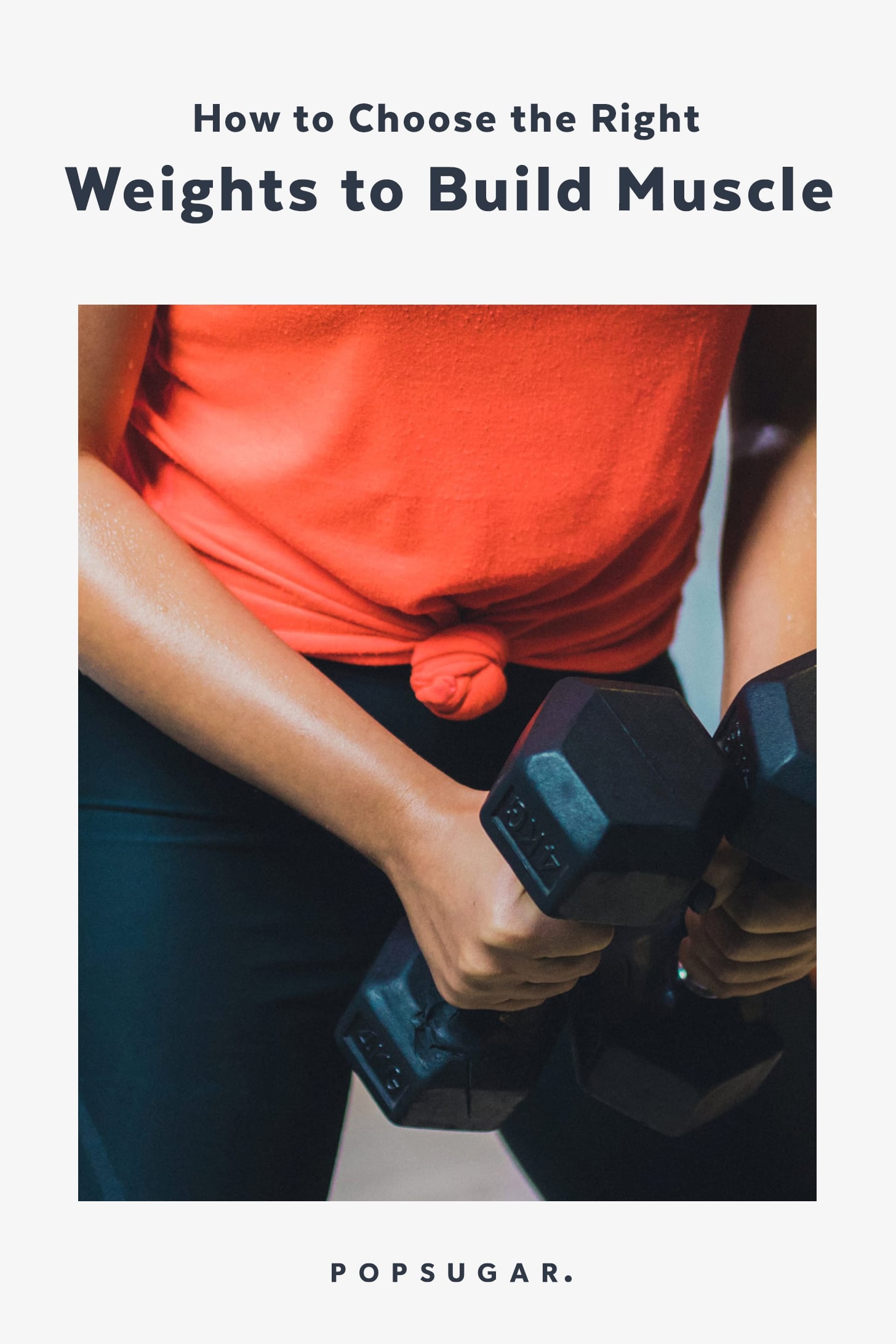Products You May Like

Strength training is an essential component of any workout regimen, especially if your goal is to get stronger. That doesn’t always mean picking up weights — for example, Pilates totally counts as strength training, as do bodyweight exercises and moves with resistance bands. However, if you’d like to up the intensity and really focus on building muscle, lifting weights is a great idea.
That said, it’s important to choose your weights carefully. You’ll want to make sure you’re challenging your body appropriately: Lift too light, and your workout may not result in the gains (or endorphins) you want; lift too heavy, and you could put yourself at risk of injury. In addition to selecting the right weight, it’s also important to do the appropriate number of sets and reps to build endurance. Of course, this is all easier said than done, especially if you’re a beginner at lifting weights. That’s why we created the following guide to help you choose the correct weight for strength exercises.
Follow these three trainer tips for an easier time picking out weights — and know that as you spend more time doing strength workouts, it’ll start coming naturally. Then, check out how to pursue specific, advanced strength goals if you’re ready to level up.
1. When in Doubt, Go Lighter
If you’re unsure how much weight you may be able to lift for a given exercise, it’s always a good bet to opt for a lighter weight — especially if you’re a beginner or have taken a break from exercise. For example, if you’re not sure to grab 8- or 10-pound dumbbells, start with the eights. You can always warm up with a lighter set and level up during the next round. It’s better to execute reps with perfect form and lighter weight than to use heavier weights and compromise your form because it could result in injury.
2. How to Know If Your Weights Are Too Light or Too Heavy
A good indicator that the weight you’re using is too light is if you feel like you could do infinite amounts of reps without taking a break. While this may be great for your confidence, it’s not going to help you build muscle. Common signs the weight you’re lifting is too heavy are poor form and being unable to perform the designated number of sets and reps.
A general rule of thumb is to find a weight that challenges you during the final few reps of an exercise, but that can also be sustained for multiple sets. As you strength train consistently and get stronger, you should find that the amount of weight that hits this sweet spot continues to increase.
3. Change Your Weights Depending On the Exercise
To decide which weight to pick up, it can help to look at which moves you’re doing. With compound exercises — moves that engage multiple muscles and require movement from more than one joint (such as squats, deadlifts, or bench presses) — you can likely pick up heavier weights than with single-joint moves (such as bicep curls). You’ll also likely be able to lift heavier for lower-body exercises than for upper-body exercises, as the muscles in your legs and glutes are some of the largest and strongest in your body.
How to Choose the Right Weight For Specific Strength Goals
If you’ve already built a solid base of strength and are interested in pursuing more advanced strength goals, you can use this method to determine how heavy you should be lifting. First, you need to know what your goal is: Are you lifting for strength endurance, maximal muscle growth (hypertrophy), or maximal strength? From there, you’ll be able to determine how much weight you should be lifting, along with the optimal set and rep range.
First, determine the heaviest weight you can lift for three to five reps of a given exercise. For example, to figure out the weight you should be using for a barbell back squat, first figure out the heaviest weight you can lift with proper form for three to five reps.
Next, you’ll need to enter the weight you lifted and the number of reps you performed into a one-rep max calculator. The calculator will provide you with a list of percentages of your one-rep max. Based on your goal, you can use that information, along with the following chart, to figure out sets, reps, and weight. You don’t have to calculate your one-rep max for every exercise, but I do recommend doing it for essential lifts like the squat, deadlift, bench press, and hip thrust.
And FYI: If you never want to lift this heavy — or just don’t want to do the math — that’s totally OK. If you continually challenge yourself by picking up heavier weights, trying more difficult moves, adding on more reps, or increasing variety in your workout, you can still challenge your muscles, build strength, and gain all the empowering and mood-boosting benefits of exercise without going anywhere near your one-rep max.
| Strength Endurance | Maximal Muscle Growth (Hypertrophy) | Maximal Strength | |
|---|---|---|---|
| Weight | 50-70 percent of your one-rep max | 75-85 percent of your one-rep max | 85-100 percent of your one-rep max |
| Sets | One to three | Three to five | Four to six |
| Reps | 12 to 20 | Six to 12 | One to five |
—Additional reporting by Lauren Mazzo
